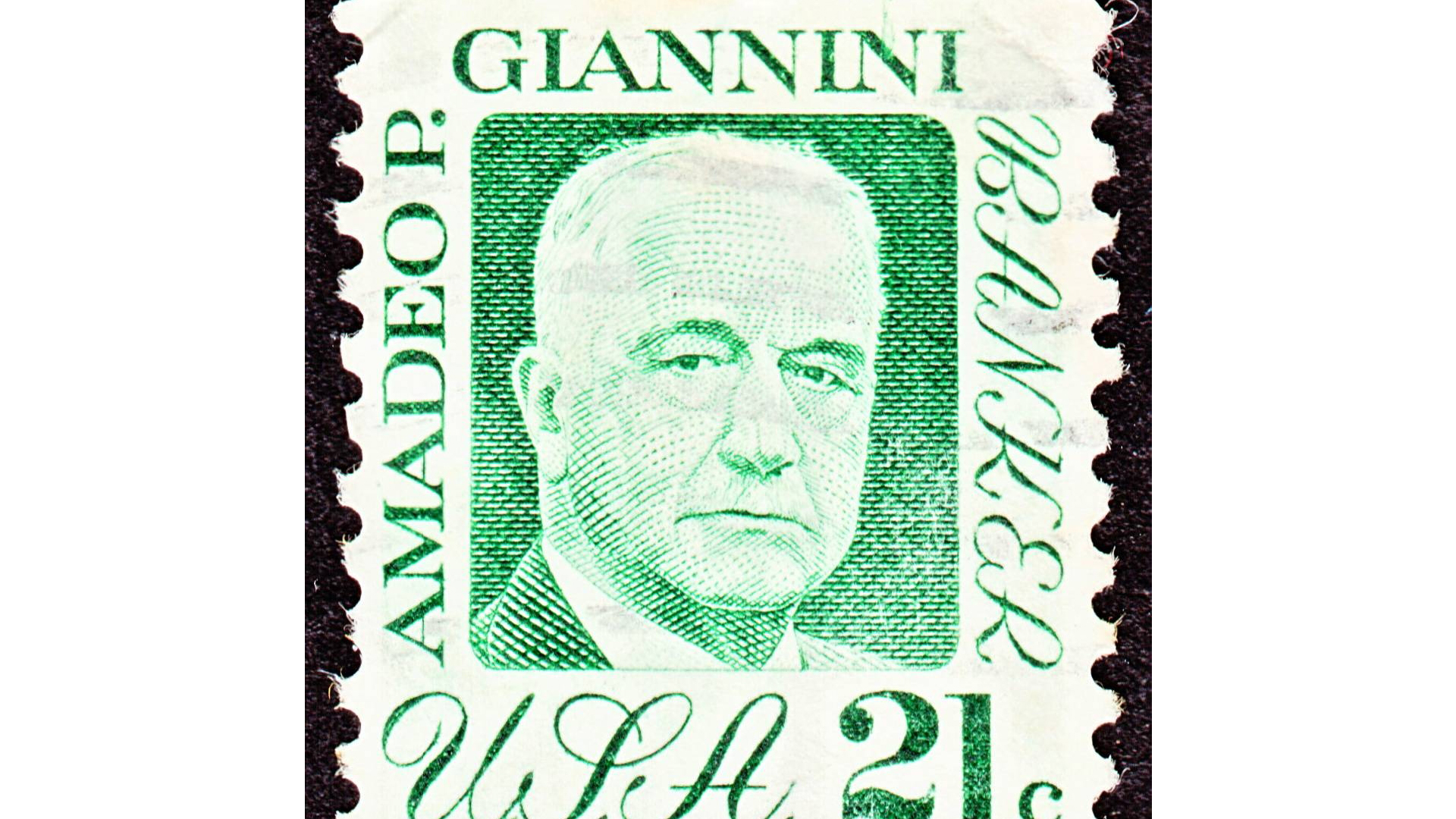
1973 Amadeo P. Giannini commemorative stamp (Photo credit: allnumis.com)

Favale di Màlvaro, Genova_Giannini’s family city of origin. (Photo Credit: crgenova24.it)
Born in the USA
In 1869, Luigi and Virginia Gianinni struggled to live a dignified life, common for many Italians at that time. They decided to leave Favale di Màlvaro, a small Ligurian village near Genoa, loaded onto a large ship and embarked on the long voyage to the United States.
Amadeo Peter, or A.P. as his nickname, was born in San Jose, California and soon after life would throw curve balls his way. At 7 years old, his father was killed by a gunshot fired from a laborer unwilling to repay 1 dollar of debt. At this tender age, he lived by the mantra, “No one should have to die for 1 dollar.” At age 12, he began working as an apprentice at his stepfather’s fruit shop and became a business partner at age 19, making it the most successful fruit store in the area. In 1892, he married Clorinda Flores Cuneo, the daughter of one of the most prominent Italian-American families in San Francisco, CA.
At the age of 33, and with just over $300,000 to his name, A.P. founded the Bank of Italy, the first popular bank with widespread shareholding. Loans to immigrants started at 25 dollars and were guaranteed by the shake of hands. After 2 years, the deposits amounted to more than 1 million dollars.

A branch of Bank of Italy, US_ 1904 (Photo credit: ultimate.facts.com)
In 1906, the catastrophic earthquake of San Francisco destroyed the bank yet Giannini managed to salvage gold and cash and move it to safety. Soon after the earthquake, he opened a makeshift bank, advertising “Loans as before, more than before!”. As a result, San Francisco’s Italian quarter, North Beach, was the first neighborhood to be rebuilt.
Movies and the Gateway to the Pacific Ocean
Giannini’s miraculous comeback was only the beginning for a lasting legacy. Against the interests of East Coast bankers, the Bank of Italy became the Bank of America, National Trust and Savings Association and ultimately, Bank of America. After the stock market crash of 1929 and the Great Depression that followed, Giannini kept financing with an interest rate close to zero. Not only did his bank survive the Great Depression, by 1945 it was recognized as the strongest bank in the world.
The many areas of the economy to which Giannini provided critical support included California’s wine industry. He granted loans to those planting vineyards and supported scientific research to make the vineyards prosper. In 1928, he donated $1.5 million of his profits to the University of California for the development of agriculture. As an art and cinema lover he produced “Snow White and the Seven Dwarfs” for his friend Walt Disney and supported Charlie Chaplin’s 1921 blockbuster “The Kid”, growing the bank through royalties. He also helped finance Frank Capra's film "It's a Wonderful Life” and the stand-up-for-the-working-man character, George Bailey (played by James Stewart), was based on A.P. Giannini. Between 1936 and 1952, Giannini financed over 500 films.
In 1932, the Great Depression was wearing on and Giannini lent 6 million dollars to engineer Joseph Strass to finance his crazy idea of building a bridge without any concrete. This bridge would become the gateway to the Pacific Ocean, The Golden Gate Bridge. Giannini’s conditions to build this bridge was that the city’s unemployed Italian workers would be hired for the project. At the end of World War II, Giannini financed the Marshall Plan, helping a devastated Europe and the car manufacturer FIAT in Italy.
Giannini’s Greatest Love was Italy
Giannini’s financial operations, featuring low interest rates and the confidence in hard-working Italian-Americans, was based on his love for his ancestral homeland of Italy, particularly the home of his parents. In 1912, during a grand dinner of 100 guests in Liguria, Italy he said, “We live overseas, but our heart is here with you”. The Centro Studi Amadeo Peter Giannini in Genoa aims to create a bridge between Liguria and the United States, in particular with Los Angeles.
Barbara Benzoni
Barbara Benzoni was born in Milan and lives between Rome and Tuscany. She is devoted to USA, the land of courage and innovation. She’s Peter's super-lucky mum and Ale's wife. Cinema, art, good food and only beautiful things are the themes of her existence. With a degree in Italian literature and a Masters in Sports Management she can both enjoys books and basketball matches. In 25 years she has been organizing sport events all over the world and she’s been lucky enough to meet the greatest champs ever. Curiosity in everyday life and people are her drivers. Her personal icon is Mohammed Ali : "It's not bragging if you can back it up".

